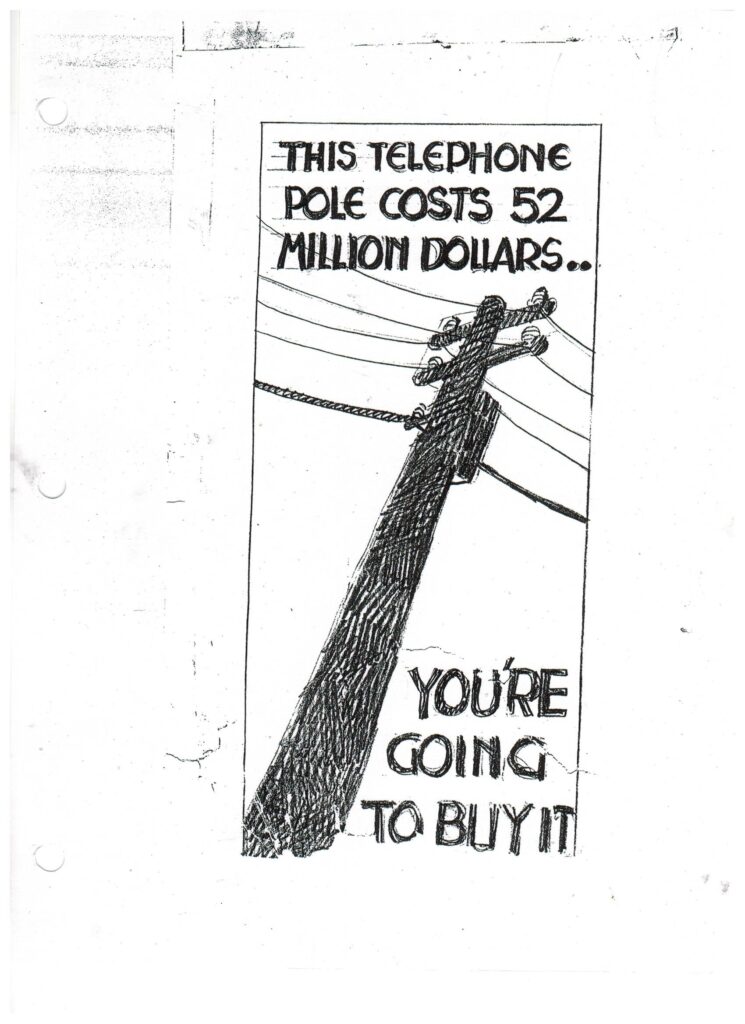Canadian Committee for World Press Freedom honouree Ken Rubin highlights his top investigative probes
Over five decades of digging for government and corporate information has produced much media coverage, but it’s the public impact I hope will come from such once-hidden discoveries that counts.
As a public interest activist, citizen researcher and journalist, it’s key that the data obtained and reported has a lasting public impact and succeeds in raising important public policy issues. That is no small feat to expect in this information age.
Using regulatory interrogatories and access laws, here are some of my most significant inquiries from a lifetime of data digging that have harnessed the power of media and led to lasting public impact at the grassroots level.
1. 21,000 privileged free phones at subscriber’s expense
After filing hundreds of interrogatories directed at Bell Canada in CRTC rate hearings, the media covered one showing that senior-and-middle-range Bell employees enjoyed 21,000 free phones. That included some Bell executives having several free phones, including at their cottages.
“Why do 21,000 Bell Canada employees have free telephones?” wrote the Globe and Mail’s esteemed political columnist Geoffrey Stevens in his March 18, 1977 column. “How much does this perk cost the company? Meanwhile, of course, how much is it costing all of us who are being asked to pay more for our phones?”
The revelation enraged many, including members of the consumer coalition of anti-poverty, Indigenous and civil liberties groups I then co-ordinated called Action Bell Canada.

At the same time, some people in Bell Canada territory lacked phone services and other subscribers were confined to having only multi-line service. This find helped demonstrate to the public and the CRTC that the big and powerful monopoly, Bell, was getting away with highway robbery. And, it put the regulators on notice to increase phone service to people in underserved areas.
2. A corrupted Canada Food Guide
I have always been interested in food industry politics and privileges. Being an organic farmer growing healthier foods made me all the more curious about what was really behind the iconic Canada Food Guide.
And true enough, documents I obtained showed that food lobbyists got extra attention and servings in the Guide that laid out what was supposedly good for us to eat. It is worth billions to the food industry to get their products bumped up in such a widely-used government publication that had Bible-like status.
Overnight, the government-issued food guide became suspect in the public’s mind who then had to sort their food intake out for themselves without trusting governments to do it for them.
“Even in today’s topsy-turvy world, it is something of a shocker to discover the Canada Food Guide is a political document,” read the Ottawa Citizen editorial on Jan. 16, 1993, the day after my blockbuster story broke. “Ottawa’s new food guide should be taken with a grain of salt ” read the Toronto Star editorial that same day.
More than 25 years later, the latest food guide is finally beginning to reflect a better deal, and a more credible set of recommendations that moves away from taking advice from food lobbyists.
3. Exposing the deadly government funding of the asbestos lobby
It took years of filing multiple requests to get records that started to tell the truth about government involvement in the asbestos industry. It then took further effort to bring the stories to the media that helped change Canadians’ attitudes towards the industry’s claim that their product, while carcinogenic, could be used safely when properly applied and adequately contained.
The truth was the use, handling and breathing in of asbestos, intentionally or not, was helping lead to untimely deaths and its official export promotion was one of the most lethal trade practices Canada ever had.
The most significant find was that the Canadian and Quebec governments spent millions of dollars funding a Montreal-based international asbestos lobby group intent on pushing asbestos use as safe overseas, with the help of Canadian embassies worldwide.
Despite most Canadians now seeing asbestos as a lethal product, it is, in some cases, still in use. It is hard, though, to get more data about the presence of asbestos in our playgrounds, homes and workplaces and to get government to take action based on that data, once obtained.
But the pursuits have proved valuable for communities and organizations around the world. An international group co-ordinator pressing countries to ban asbestos products wrote me on April 28, 2010.
“To this day, those documents continue to provide our international group with a rich source of materials,” wrote Laurie Kazan-Allen, co-ordinator at the International Ban Asbestos Secretariat of my investigations into the Canadian government’s funding of the Chylosite Institute (then the Asbestos Institute).
“Those often delayed documents, even though heavily censored, presented an explosive picture of industry dirty dealings, government connivance, and manipulation by Canadian vested interests of international bodies and other countries’ struggles to cope with Canadian asbestos exports and propaganda.”
4. ‘Please get our data’: Maher Arar
Monia Mazigh came my way to find out more about her imprisoned husband, Maher Arar, who was then in a Syrian jail. Over a few years, some 60 access requests and some 60 complaints were made.
Records confirmed Arar was on a terrorist look-out list, that he was beaten at a notorious Syrian jail and that he had been the subject of misinformation spread by law enforcement and security intelligence bodies.
The data obtained on their behalf was useful to Arar and helped him regain his self-worth and reputation. It helped lead to getting the O’Connor Inquiry called and for Canadians seeing the misuse of information about Arar by some Canadian officials where he was portrayed as a “terrorist.”
“You took action, lending your special skills and expertness to the campaign for public accountability and human rights in my case,” Arar wrote to me on Sept. 29, 2009. “In particular, your unmatched knowledge of federal access to information and procedures was often key in obtaining important documents at crucial times before and after the O’Connor Inquiry.”
5. Finding out about shoddy light rail transit construction
Some critical findings are more local in scope.
One on-going case comes from digging information on the City of Ottawa’s multi-billion light rail transit project.
Records published in a series of newspaper articles by the Ottawa Citizen showed questionable construction, including a poorly waterproofed Confederation Line tunnel under downtown Ottawa.
Some of these non-conformance reports were only obtained after a successful appeal to the Ontario Information Commissioner. They were reports that Rideau Transit Group, the private sector consortium who has failed three times to meet deadlines, wanted hidden.
I have heard from many concerned people, seen resulting letters to the editor and heard questions raised by city councillors about the economics, safety and secrecy surrounding Ottawa’s light rail project.
“How can we claim we’re doing oversight when we allow ourselves to be shut out from the (LRT) information?” asked Ottawa Coun. Rick Chiarelli as reported by the Jon Willing in the Ottawa Citizen in an Oct. 25, 2018 article. “It (LRT) has severe financial implications and it also has safety implications.”
6. Checking out the validity of a government report on bankers’ sales tactics
Records used by CBC’s Go Public indicated that Financial Consumer Agency of Canada’s study on big banks’ high-pressure sales tactics was vetted by the banks and the Minister of Finance and ended up stating that there was no systematic and widespread high-pressure sales practices at the banks.
FCAC gave the banks advance notice of their visits, started assembling the report while just wrapping up doing interviews and never once quoted from or used a single sentence from the 600 bank employees interviewed for the study or from the 4,500 complaints received about the aggressive sales pressure tactics experienced by customers.
Paul Thomas, a professor emeritus of political studies at the University of Manitoba, is quoted in the April 10 CBC story as saying that it all paints a picture of the “cosy” relationship between the country’s six big banks, the agency that’s supposed to regulate them and the federal government.
Thomas said that “the whole process is submerged. It’s not transparent. If it hadn’t been for Access to Information requests, we wouldn’t know the extent to which the banks were given a certain privileged status in this process.”
The sanitized FCAC report was the subject of questions in the House of Commons.
There is much more investigative digging for data that needs to be done locally, nationally and internationally. Using access laws and other tools as legal weapons to go behind the scenes and get at the facts, even with very weak access laws in place, can get data uncovered that government and corporate authorities would prefer the public did not see. That data once obtained and reported on has the power to impact our lives and public practices.
Ken Rubin is a long-time investigative researcher and proponent of transparency and human rights. He is reachable at kenrubin.ca.



